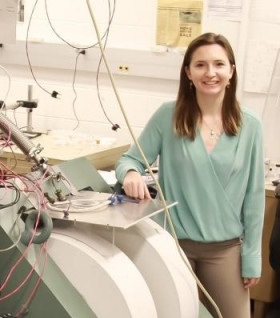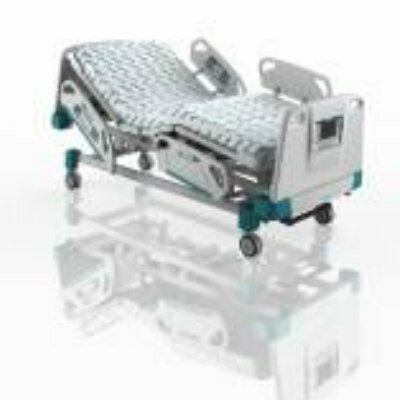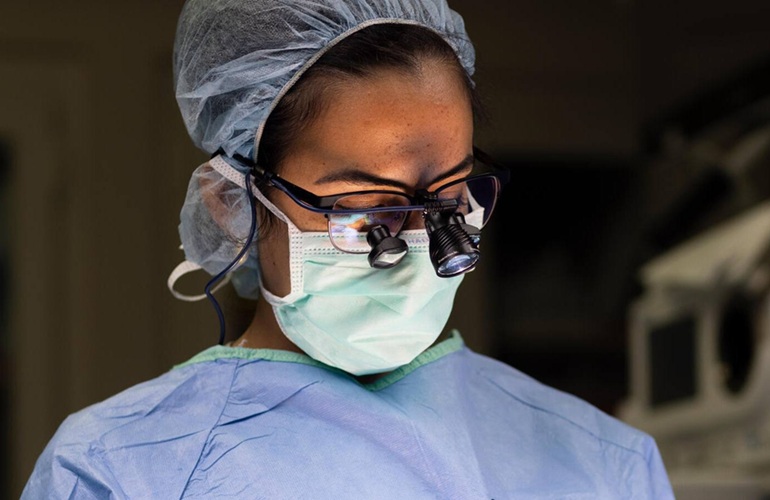High-Quality Thin Film Conductor Paves Way for Wearable Electronics with Longer Life Batteries
|
By HospiMedica International staff writers Posted on 25 Jul 2024 |

For the past two decades, researchers have been diligently working to refine tetradymite films made from ternary tetradymite—a mineral composed of bismuth, tellurium, and sulfur. These materials are intriguing due to their potential as topological insulators, where electrical current flows along the surface, while the interior remains insulated, thus minimizing energy dissipation. The surface conduction of these materials also exhibits spin properties, which could significantly benefit the development of spintronic devices that operate on minimal power. Scientists have now made huge advancements which suggest that these materials might soon play a crucial role in the field of wearable electronics and other miniature devices.
In collaborative research involving scientists from The Ohio State University (Columbus, OH, USA), the team successfully created thin films, ranging from 90 to 150 nanometers in thickness, which are advanced versions of ternary tetradymite. Their findings indicate that these films exhibit superior electron mobility compared to similar materials, making them highly conducive to electrical currents. The low defect density within these films ensures minimal interference with the movement of electrons on the surface, simialar to a clear, open freeway for electrons. These optimal conditions were achieved using molecular beam epitaxy (MBE), a process that starts with the same crystal structure as tetradymite but introduces substitutions of other elements to create compositions with unique conduction properties. This method has effectively reduced the concentration of charge carriers that typically populate the interior of natural tetradymites, thereby enhancing electron mobility.
This research has moved beyond merely constructing these films to comprehensively testing their properties in the laboratory—a significant progression since previously, materials studied were considerably larger. The meticulous testing of these materials led to the identification of elusive oscillations, which confirmed that the films were nearly scatter-free, a marked improvement over natural variants. Further investigations into the films’ thermoelectric properties were conducted through sensitive thermal tests. Inspired by these findings, published in Materials Today Physics, the team is already developing new film versions. While practical applications may still be a few years away, the potential of these energy-efficient films is vast. They could be integrated into ultra-thin chips used in miniature electronics, potentially laying the groundwork for powering robots or wearable technologies designed to regulate body temperature.
“These materials, naturally speaking, just aren’t the best quality in terms of thin film growth, but we need thin films to make devices,” said co-lead author Brandi Wooten, a recent PhD graduate in materials science and engineering at Ohio State. “This is a nice paper showing we can make these materials good enough in thin film form to be put into devices. This is a stepping stone to getting these materials to do more.”
Related Links:
The Ohio State University
Latest Critical Care News
- New Tool Predicts Cardiovascular Disease Risk More Accurately
- First Of Its Kind Adhesive Offers More Comfortable Alternative for Wearable Medical Devices
- Discovery of Heart’s Hidden Geometry to Revolutionize ECG Interpretation
- New Approach Improves Diagnostic Accuracy for Esophageal Motility Disorders
- Wristband Sensor Provides All-In-One Monitoring for Diabetes and Cardiovascular Care
- Handheld Device Enables Imaging and Treatment of Oral Cancer in Low-Resource Settings
- New Fully Automated AI Algorithm More Effective at Predicting Heart Attack Risk
- First-In-Kind Self-Assembling Collagen Scaffold Advances Wound Care
- AI-Enhanced Echocardiography Improves Early Detection of Amyloid Buildup in Heart
- Consumer Wearables Could Predict Pediatric Surgery Complications
- Wireless Implant Delivers Chemotherapy Deep into Tumors Without Side Effects
- Skin-Like Sensor Monitors Vital Signs and Tracks Healing After Surgery
- Implantable Device Could Save Diabetes Patients from Dangerously Low Blood Sugar
- New Prostate Screening Device Could Replace Traditional Examination Method
- Adaptive Spine Board to Revolutionize ER Transport
- Mapping Communication Between Internal Organs to Enable Earlier Illness Diagnosis
Channels
Surgical Techniques
view channel
Computational Model Accurately Simulates Shunt Performance to Prevent Repeat Surgeries
Millions of people worldwide suffer from hydrocephalus, a condition characterized by the buildup of excess cerebrospinal fluid in the brain. Treatment typically involves the surgical placement of shunts... Read more
New Method Could Replace Laparoscopic Surgery for Groin Hernia in Women
Groin hernia repair is the most common general surgical procedure in the world. While groin hernias are more prevalent in men, women face a greater risk of complications from the condition.... Read morePatient Care
view channel
Revolutionary Automatic IV-Line Flushing Device to Enhance Infusion Care
More than 80% of in-hospital patients receive intravenous (IV) therapy. Every dose of IV medicine delivered in a small volume (<250 mL) infusion bag should be followed by subsequent flushing to ensure... Read more
VR Training Tool Combats Contamination of Portable Medical Equipment
Healthcare-associated infections (HAIs) impact one in every 31 patients, cause nearly 100,000 deaths each year, and cost USD 28.4 billion in direct medical expenses. Notably, up to 75% of these infections... Read more
Portable Biosensor Platform to Reduce Hospital-Acquired Infections
Approximately 4 million patients in the European Union acquire healthcare-associated infections (HAIs) or nosocomial infections each year, with around 37,000 deaths directly resulting from these infections,... Read moreFirst-Of-Its-Kind Portable Germicidal Light Technology Disinfects High-Touch Clinical Surfaces in Seconds
Reducing healthcare-acquired infections (HAIs) remains a pressing issue within global healthcare systems. In the United States alone, 1.7 million patients contract HAIs annually, leading to approximately... Read moreHealth IT
view channel
Printable Molecule-Selective Nanoparticles Enable Mass Production of Wearable Biosensors
The future of medicine is likely to focus on the personalization of healthcare—understanding exactly what an individual requires and delivering the appropriate combination of nutrients, metabolites, and... Read more
Smartwatches Could Detect Congestive Heart Failure
Diagnosing congestive heart failure (CHF) typically requires expensive and time-consuming imaging techniques like echocardiography, also known as cardiac ultrasound. Previously, detecting CHF by analyzing... Read moreBusiness
view channel
Bayer and Broad Institute Extend Research Collaboration to Develop New Cardiovascular Therapies
A research collaboration will focus on the joint discovery of novel therapeutic approaches based on findings in human genomics research related to cardiovascular diseases. Bayer (Berlin, Germany) and... Read more
















